Recently Igor Chudov wrote about how fake scientific studies by Gregg Semenza were exposed. Among some of the tricks used by fraudulent studies included fake Western blots and duplicate mice images.
In a curious twist, Gregg Semenza was ironically exposed by Elisabeth Bik, the very same Elisabeth Bik who the Daily Beagle caused to flee into hiding after we exposed her usage of fraudulent CDC (Center for Disease Control) statistics. Small world.
And yes, Semenza work is self-evidently fraudulent; as shown on Igor’s article, duplicate images of mice match (ignore the coloured, artificial blots and look at the mouse profile). Other researchers also couldn’t repeat his findings.
As interesting as it is Elisabeth Bik has an interest in fraudulent Western blots — given the suspicion of fraudulent Western blots in the Pfizer dataset — (who advised the European Medicines Agency [EMA] on the legitimacy of the blots anyway?), it got the noggin' a joggin’ that if the Western blots were fraudulent, what else was?
Fraud in papers usually doesn’t stand alone; most lies form a chain. If one dataset is fraudulent, then anything based on or around that dataset is inherently so.
One aspect that had been left unexamined so far were the images of mice from ‘lab results’ by Pfizer:
Found in the EMA leaks under document ‘Annex 1 - Draft 3.2.P.2.2 Drug Product.pdf’, in folder ‘09. Applicant-Rapps-EMA CMC TC - 26.11.2020’, page 13, it claims to show readings of mice in various states.
Now, the images will admittedly look like a confusing mess, so to simplify things, the Daily Beagle created this diagram showing the three groups, WT (bland blue), ApoE KO (spotty green) and ApoE KO+ (scratchy yellow). The effects are applied in case readers have colour blindness:
Different coloured columns must have different mice to each other. And different rows should have images taken at different times.
There are 34 images total, so this was no small feat, requiring a calling all hands to deck. For simplicity, we named each row by letter (A to D, top to bottom) and each column by number (1 to 9, left to right).
Before long, Aldermin (previously credited in our Care Homes Article) spotted something odd in images B2 and C2 (highlighted, left hand side):
Even flicking between the two images there’s something ‘off’ about them:
To make similarities more evident, the Daily Beagle then highlighted the comparison points of markings on the mice (and noticeable discrepancies):
‘Okay, the mice are similar, so what?’ some of you might be asking.
Quoting For Better Science, regarding signs of the Semenza fraud:
In the same paper, mouse images are sometimes strangely similar, as if that mouse was imaged just seconds and not days apart as the study description claims.
Could you believe these photographs were taken 48 hours apart?
Maybe there’s just enough movement you could believe it was, but the next comparison should raise an eyebrow.
In the same column there is an even bigger smoking gun: B2 and D2, highlighted (left):
Alternating between B2 and D2 looks like this:
And for those of you not sure what you should be looking at specifically, it is this:
The third mouse’s legs have barely even moved, in-fact, the third mouse seems to be practically occupying the same space, as if only slightly adjusted manually.
Meanwhile, the mouse on the far left appears to ‘move down’, but where it moves down there is significant blurring, as if some sort of distort digital editing tool has been used, as if to fake movement:
GNU’s Image Manipulation Program would produce a similar effect with the smudge tool:
When the Daily Beagle asked a layperson (with no knowledge of the context) to estimate the time difference between when images B2 and D2 were taken (with no highlighting), they replied they thought they had been taken ‘seconds apart’.
You might also think these were taken seconds or, at most, minutes apart, right?
Well, Pfizer would have you — and the EMA — believe that these two images were, somehow, taken 72 hours apart. What?
These are the studies that are supposed to show ‘safety’ in the LNP (lipid nanoparticle) distribution of the mRNA shots. Is it any wonder that there is clear evidence of data tampering?
The odds of there being convenient blurring on the first mouse, and the third mouse occupying the exact same place, in the exact same order, with practically similar leg positioning, and minimal movement after 72 hours is so absurdly low as to beggars belief.
They might have skipped mouse leg day, but when asked for comment, Pfizer did a runner.
Pfizer once again caught committing research fraud.
Subscribe to receive more content like this from the Daily Beagle.
Raise awareness!
And leave a comment below (open to the public):





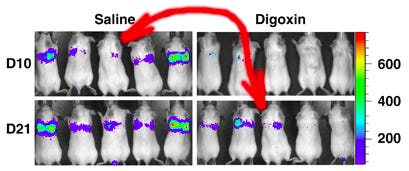



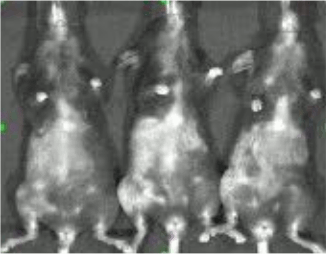


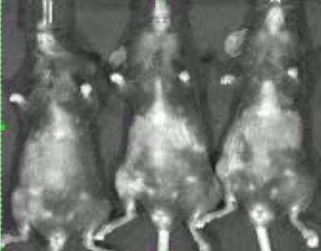
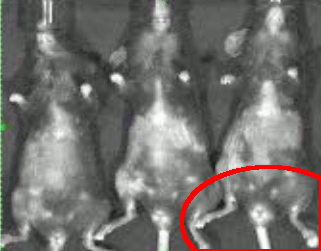
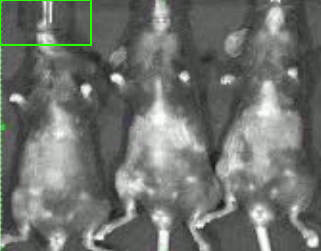

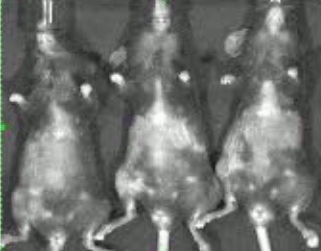


Another example of how Pfizer's Safety Trials on mice are fraudulently manipulated then presented to suit the intended result! Like all safety validation undertaken by Pfizer!
When asked to explain the anomalies, Pfizer terminated communication.
Historically, Pfizer are notorious and have had to pay the highest fines, EVER, for impropriety in the CORRUPT Big Pharma industry!
Mick from Hooe (UK) Unjabbed to live longer!
RJ graciously banned from this Substack for having posted IP logger addresses on another Substack, whilst spamming harmful and out-of-context "advice" on the shots here.
The datamining alone would be sufficient for a ban, but I will give no quarter to child killers. Begone.